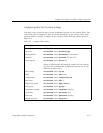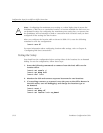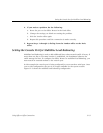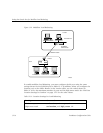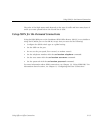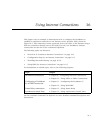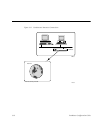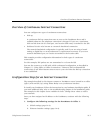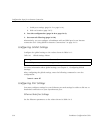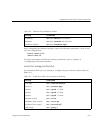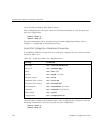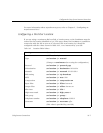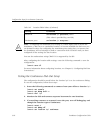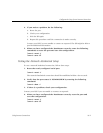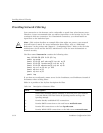
Using Internet Connections 16-3
Overview of Continuous Internet Connections
Overview of Continuous Internet Connections
You can configure two types of continuous connections:
• Dial-up
A continuous dial-up connection starts as soon as the PortMaster boots and is
redialed whenever the telephone connection is dropped. If you use a continuous
dial-out link from the S1 serial port, one location table entry is needed for the ISP.
• Dedicated circuit—also known as a network hardwired connection
The network hardwired configuration is typically used if you are using a leased
analog or digital line or an asynchronous-to-synchronous converter. If you use a
network hardwired port, no entries are needed in the location table.
This example provides configuration information for both types of continuous
connections.
For this example, IPX packets are not transmitted to or from the ISP.
You can also connect to an ISP with a dial-on-demand configuration, as described in
Chapter 15, “Using Office-to-Office Connections.” However, dial-on-demand ISP
connections do not allow Internet users access to your site when the dial-up connection
is not established.
Configuration Steps for an Internet Connection
The example described in this chapter connects a PortMaster router located in an office
(
office1
) with an ISP (
isp1
) using Frame Relay on a synchronous interface.
To install your PortMaster, follow the instructions in your hardware installation guide. If
you need additional help, refer to the troubleshooting chapter of the installation guide.
The example in this chapter shows variables in
italics
. Change these values to reflect
your network.
Once you have assigned an IP address to the PortMaster, continue with the following
steps:
1. Configure the following settings for the PortMaster in Office 1:
a. Global settings (page 16-4).
b. Ethernet interface settings (page 16-4).



